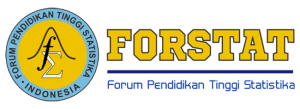Adoption of Agriculture Mechanization on Paddy Farmers in Indonesia: Demographic Determinants, Internet Access Influence, and The Impact of Adoption on The Yield
DOI:
https://doi.org/10.34123/jurnalasks.v14i1.392Abstract
This study aims to identify the demographic determinants of the agriculture mechanization adoption on paddy farmers in Indonesia and the impact of internet use by farmers on the probability of being adopters. Besides, it also analyses the difference in the average paddy yield cultivated by adopters and non-adopters to determine the adoption impact on agricultural productivity. We found that farmers' level of education and age significantly impacts the probability of being adopters. However, the magnitude of the age impact tends to be diminishing with the increase in age. The probability of being adopters is affected significantly by gender, region, and the farm scale. Male farmers tend to be more likely of being adopters than their female counterparts. Farmers in Java have a slightly higher probability of being adopters than farmers outside Java. Adopting agriculture mechanization also has a positive association with the farm scale, where the larger the farm scale, the more likely the farmers are to be adopters. Our study also found that internet use positively and significantly impacts the farmers' probability of being adopters. Moreover, our study also confirmed a strong indication that the mechanization adoption affects the paddy yield positively indicated by the higher paddy yield average of adopters than non-adopters. Therefore, boosting the adoption of mechanization must be done, for instance, by attracting young people with high education to get involved in agriculture and up-scaling the implementation of tools and agricultural machinery assistance facilitated by the government.
Downloads
References
[2] Ruslan K. Food and Horticulture Crop Productivity in Indonesia [Internet]. 2021. Available from: https://repository.cips-indonesia.org/publications/346216/food-and-horticulture-crop-productivity-in-indonesia
[3] Houmy K, Clarke LJ, Ashburner JE, Kienzle J. Agricultural mechanization in sub-Saharan Africa: guidelines for preparing a strategy [Internet]. Rome: FAO; 2013. Available from: https://www.cabdirect.org/cabdirect/abstract/20133309706
[4] FAO. Sustainable Agricultural Mechanization A Framework for Africa [Internet]. Rome; 2018. Available from: http://www.fao.org/3/CA1136EN/ca1136en.pdf
[5] BPS. Analisis Produktivitas Padi di Indonesia 2020: Hasil Survei Ubinan. Jakarta: Badan Pusat Statistik; 2021.
[6] Olaoye JO, Rotimi AO. Measurement of agricultural mechanization index and analysis of agricultural productivity of farm settlements in Southwest Nigeria. Meas Agric Mech index Anal Agric Product farm settlements Southwest Niger. 2010;12(1):125–34.
[7] GC A, Yeo J-H, Ghimire K. Determinants of Farm Mechanization in Nepal. Turkish J Agric - Food Sci Technol. 2019;7(1):87.
[8] Barman S, Deka N, Deka P. Factors Affecting Farm Mechanization – A Case Study in Assam, India. Asian J Agric Extension, Econ Sociol. 2019;32(1):1–7.
[9] Ghosh BK. Determinants of Farm Mechanisation in Modern Agriculture: A Case Study of Burdwan Districts of West Bengal. Int J Agric Res. 2010;5(12):1107–15.
[10] Adewuyi S, Ashaolu O, Ayinde I, Ogundele S. Determinants of farm mechanization among arable crop farmers in Ibarapa zone, Oyo State, Nigeria. Moor J Agric Res [Internet]. 2006;7(1):49–55. Available from: 10.4314/mjar.v7i1.31840
[11] Fischer G, Wittich S, Malima G, Sikumba G, Lukuyu B, Ngunga D, et al. Gender and mechanization: Exploring the sustainability of mechanized forage chopping in Tanzania. J Rural Stud [Internet]. 2018;64(April):112–22. Available from: https://doi.org/10.1016/j.jrurstud.2018.09.012
[12] Sari AKI. Determinant Factors of Combine Harvester Usage and Its Impact on Labor Time Allocation and Rice Farmers’ Income in Talang Sari Village, Banyuasin District. Palembang; 2017.
[13] Bogdan R, Biklen SK. Qualitative Research for Education; An Introduction to Theories and Models. 5th ed. Pearson; 2007.
[14] Greene WH. Econometric Analysis. 5th ed. New Jersey: Prentice Hall; 2002.
[15] Van Kerm P. Adaptive Kernel Density Estimation. Stata J Promot Commun Stat Stata. 2003;3(2):148–56.
[16] FAO. Handbook on crop statistics: improving methods for measuring crop area, production and yield [Internet]. Rome; 2010. Available from: fao.org
[17] Griliches Z. Estimates of the Aggregate Agricultural Production Function from Cross-Sectional Data. J Farm Econ. 1963;45(2):419–28.
[18] Griliches Z. Specification Bias in Estimates of Production Functions. J Farm Econ. 1957;39(1):8–20.
















